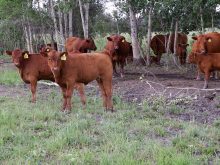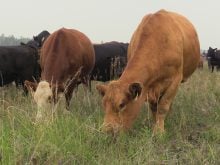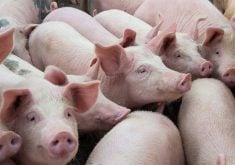Production and sale of Canadian chicken fell close to one percent last year and industry leaders say that is a success story.
In the face of the worst recession in almost 70 years, the industry faced declining consumer demand, a shift to lower-priced meats and the potential for plunging producer incomes.
Leaders of the national supply management agency, Chicken Farmers of Canada, met last year to discuss the growing problem and agreed that production should be cut to bring supply more in line with demand.
Read Also

Canola support gets mixed response
A series of canola industry support measures announced by the federal government are being met with mixed reviews.
Production quotas were reduced one percent across the board, market supply declined and prices stabilized. By the end of the year, average 2009 prices were $1.468 per kilogram, higher than 2008 and almost double 2007 returns.
CFC chair David Fuller told the annual meeting March 23 the general economic crisis of 2009 was a tough time for the industry but it weathered the storm better than its foreign and domestic meat protein competitors.
“It was a tough time for the chicken industry in this country and it would have been a lot tougher without supply management,” Fuller told CFC members at the annual meeting in Ottawa.
Executive director Mike Dungate said in his annual report that the willingness of industry leaders to impose a production quota cut in mid-year was key.
“Through the leadership of CFC and its member organizations, the Canadian chicken industry survived the global economic recession better than other livestock sectors in Canada and better than the chicken industry outside Canada,” he wrote.
“In fact, by charting a steady course of reducing supply by about one percent over the year, industry margins were improved with only a minor drop in chicken consumption. As a result, the whole industry is on a strong financial footing from which to grow as we enter 2010.”
In an interview after the meeting, Fuller said that as Canada climbs out of the recession, demand will grow.
“We are projecting a one percent growth this year and we hope to exceed that.”
Even with the reduction in production last year, the Canadian chicken industry kept production over the one billion kilogram mark first exceeded in 2007.
And despite a slight drop in per capita chicken consumption in 2009 to 31.5 kg – the first decline in 14 years – it remained the most popular meat for Canadian consumers.
As the quota reduction was applied, only Alberta recorded a slight increase in chicken production last year. All regions recorded decreases ranging from 1.6 percent in the West to 1.3 percent in Atlantic Canada and 0.3 percent in Eastern Canada.
Despite supply management import controls, significantly more chicken was imported last year than was exported, according to the CFC annual report.
Fuller said the industry can build on its status as Canada’s most popular meat but provincial and national organizations must work together.
“Chicken continues to be the number one protein choice of Canadians but the challenge for our industry will be to ensure the ongoing growth of per capita consumption,” he said.
“The opportunity is ours for the taking if we are all prepared to take on this challenge together as an industry.”














